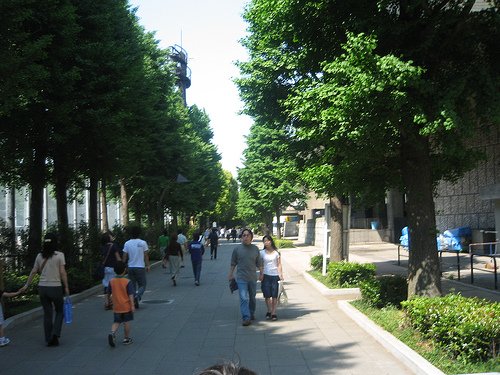The first Japanese person to visit America was Manjiro Nakahama, a 14-year-old fisherman who was rescued in 1841 by an American whaling vessel and brought to the U.S., where he received a full education in English. This was during the era of sakoku (“closed country”), when Japan was officially shut off from contact from the outside world, except for a Dutch trading outpost on the island of Dejima in Nagasaki, and it was death for a Japanese person to travel abroad or have contact with foreigners. After 12 years of living outside Japan, “John” Manjiro returned, determined to try to convince the Shogun to end the sakoku policy. When Admiral Perry’s Black Ships arrived in 1853, John Manjiro became an important figure, acting as translator and interpreter between the two parties. He went on to teach English, mathematics and ocean navigation, and was a major inspiration to Japan’s future reformers like Ryoma Sakamoto (the Che Guevara of the Meiji Restoration) and Yukichi Fukuzawa (founder of Keio University, and the man whose face is on the 10,000 yen note).
Once again, the number of people who opted out of the rest of their lives through suicide in Japan topped 30,000, according to the National Police Agency. A total of 32,552 Japanese took the tragic step of ending their lives, about the same number as in the U.S. despite the fact that America’s population is double Japan’s. As usual, people over 60 and those with health problems were the largest group, with unemployed people also highly represented. The number of students of all ages makes up an all-too-tragic percent of the group, a likely indicator of the extra stresses that Japanese society can put on young people. It’s not a problem that’s easy to solve, but one area I think they should work harder in is counseling — it’s extremely rare for a Japanese to seek some kind of psychological help for a problem, and even if they do that kind of help is very hard to find in Japan.
Whenever you go to live in a new country, you’re bound to have your share of culture shock, and I was no different when I first arrived in Japan. A wide range of professions, from the men who guide you past road construction to train station employees, have uniforms that looked to my eyes like police uniforms, so I was constantly wondering why there were so many police walking around in Japan. Every gas station, it seemed, had a big flashing light that looked like police lights, which are really there to attract customers — but I kept thinking there were accidents ahead of me on the road when it was just a “gasoline stand.” I was amazed at the beautiful ceramic tiles on Japanese houses, which made them look, well, very Japanese. And the vending machines — you couldn’t drive a kilometer without passing twenty or thirty of them on either side of you. But one of the biggest shocks was that all but the largest streets in a Japanese city have no names. To give directions in Japan, you tell someone to turn left at the beauty shop, go straight, then turn at the pachinko parlor, or you draw them a map. I distinctly remember wanting to get my other gaijin friends together and name all the streets in our city.
Kanji is cool, and J-List popularized Japanese-themed T-shirts with our best-selling “Looking for a Japanese Girlfriend” and other original designs. Today we’ve got a great new T-shirt for you: the austere cover of a Japanese passport. A great design that’s both elegant and uniquely Japanese, the shirts come in red (standard men’s size) and navy blue (fitted girl’s shirt), the colors that Japanese passports are made in. Get one of each and go for what’s known as the “pair look” (when a couple wears matching shirts) — kawaii!
















